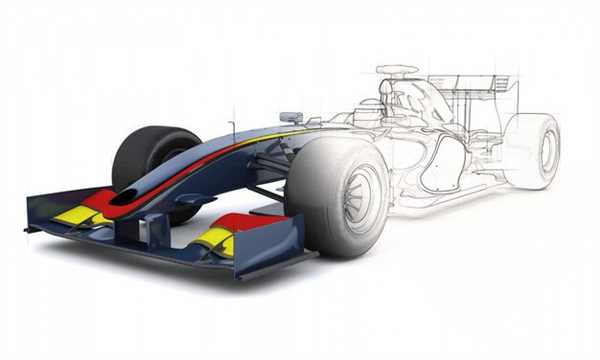
The selection of materials greatly influences the vehicle’s overall weight and structural integrity. Advanced composites like carbon fiber or aluminum alloys can reduce mass while enhancing crash resilience. Ensure that the design reflects a low center of gravity to improve handling dynamics significantly, which is critical during high-speed cornering.
Pay attention to the geometry of the suspension system. Incorporating multi-link configurations allows for better wheel control and contact with the track, improving traction. Calculate optimal camber angles to maximize tire grip depending on specific track conditions and driving styles.
Integrate aerodynamics into your framework; a streamlined profile minimizes drag while maintaining downforce. Utilize computational fluid dynamics (CFD) during the initial stages to visualize airflow and make precise adjustments to the body shape, aiding in speed and stability.
Lastly, adjust the weight distribution by strategically placing components like the engine and fuel tank. A balanced approach enables nimble maneuverability, which is essential in competitive settings. Applying these principles will yield a robust platform for superior track performance.
Material Selection: Balancing Weight and Strength in Chassis Construction
Utilizing carbon fiber composite materials offers significant weight reduction while maintaining exceptional rigidity. Carbon fiber’s high tensile strength-to-weight ratio makes it an ideal choice for competitive applications. Consider integrating aluminum alloy components, specifically 6061-T6, which provides a favorable balance of strength and reduced mass.
Evaluate advanced high-strength steels (AHSS) for portions of the framework. AHSS can enhance impact resistance without substantial weight penalties, effectively enhancing overall structural integrity. Employing finite element analysis (FEA) during the design phase allows for optimization of material layouts, ensuring no excess mass is present.
Implementing a modular construction approach can further streamline the build process, allowing for easier repairs and modifications. This adaptability can improve longevity and performance without compromising the initial construction quality. Sourcing materials from reliable suppliers ensures consistency in mechanical properties, critical for high-stakes applications.
Coating selected materials with advanced finishes can enhance resistance to corrosion, maintaining structural integrity over longer periods. Consider a multi-layer coating system that combines protective and weight-saving features, thereby achieving longevity and performance without redundant mass.
Tuning Suspension Geometry for Enhanced Handling and Stability

Adjusting the camber angle is a primary step to improve tire contact with the road surface during cornering. A negative camber helps distribute weight effectively, enhancing grip and reducing understeer. Aim for a maximum of -2 to -3 degrees for a balanced handling behavior.
Incorporating adjustable toe settings allows for fine-tuning responsiveness. A slight toe-in configuration can improve stability at high speeds, while toe-out enhances turn-in response. Experiment with these settings based on track conditions and driver preferences.
The use of anti-roll bars significantly influences body control. Stiffer bars reduce body roll but might compromise ride comfort. Adjust the diameter and stiffness of these components to find a balance that aligns with performance expectations.
Altering ride height affects center of gravity and weight distribution. Lowering the suspension tightens handling but may lead to a harsher ride. Aim for a moderate drop that maintains both comfort and performance, usually within the range of 1-2 inches.
Utilizing high-quality dampers and springs plays a critical role in optimizing suspension responsiveness. Consider adjustable coilovers, which allow for varying the damping rates and spring rates based on driving conditions and preferences.
Finally, thoroughly testing these adjustments on a track or closed course reveals their true effects. Gather data on lap times and vehicle behavior to refine geometries continually. Emphasize continuous improvement and adapt to evolving performance needs.
Integrating Safety Features Without Compromising Aerodynamics

Incorporate advanced materials like carbon fiber and aluminum alloys into the structure to enhance strength while minimizing weight. This combination improves crash protection without affecting airflow significantly.
Implement crumple zones designed to absorb impact energy strategically. Position these areas to maintain aerodynamic integrity, ensuring they do not disrupt the airflow around the vehicle.
Consider internal roll cages crafted from high-strength steel. Design them in a way that complements the overall structural shape, optimizing both safety and aerodynamics.
Employ aerodynamic fairings to cover safety systems, such as fuel cells or battery compartments, reducing drag while providing additional protection.
Utilize computer simulations to analyze airflow patterns around safety enhancements. Adjust geometry based on simulation data to achieve an ideal balance between safety and aerodynamic efficiency.
Incorporate active safety features, such as adjustable wings that respond to vehicle dynamics. Ensure their design integrates seamlessly with the bodywork to maintain low drag coefficients.
Adopt modular designs for safety components, allowing for quick changes in case of regulatory updates or advancements in technology without needing a complete chassis overhaul.
Lastly, conduct extensive testing on a wind tunnel to validate all modifications. This step guarantees that safety integrations do not unacceptably increase drag or disrupt airflow alignment.


